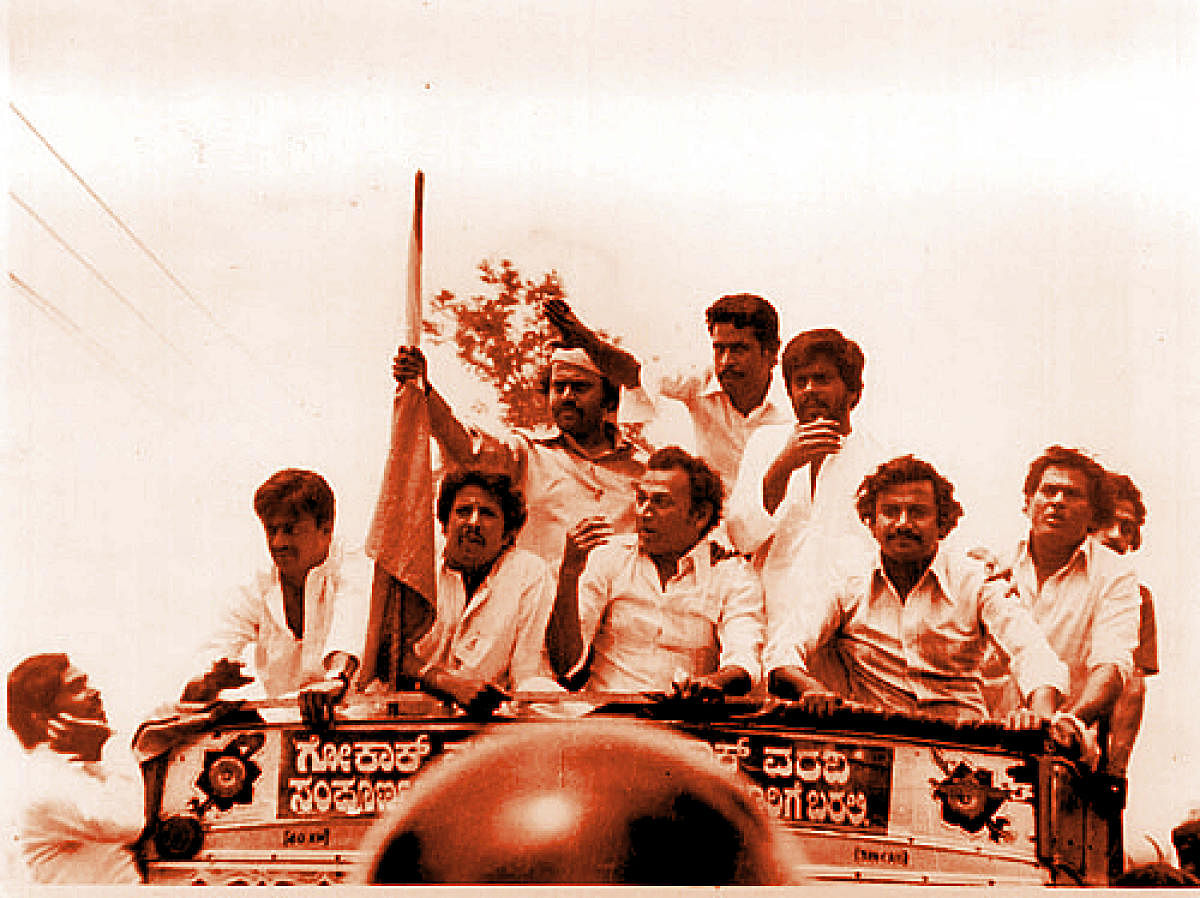

The Gokak agitation of the 1980s, described as one of the biggest language-centric movements in post-independent India, had its origin in the much contested three languages formula, which was adopted on the recommendations of several education commissions.
The most contentious aspect of this proposal was offering Sanskrit as the first language in Karnataka’s high schools until the Gokak movement raised a huge protest against it.
Sanskrit was directly offered at the high school level, with the option to answer examinations in Kannada or English. Surprisingly, Sanskrit students were found to score high marks and thereby secured higher ranks in the SSLC examinations.
The language question
This led to a situation in which Kannada, the state language, was the last choice of many students, especially in the English-medium schools. Kannadiga students were not required to study their native language or mother tongue at all in high school.
The then Chief Minister D Devaraj Urs took a decision to correct the anomaly by moving Sanskrit from the first language to the group of third languages, while Kannada and all languages of the land (including minority languages) were brought to the group of first and second languages.
It has to be said emphatically that at no stage were languages other than Kannada made to lose the constitutionally assured status and protection, because the myth circulated then — which still survives — is that these languages were marginalised by the hegemony of Kannada.
After Urs lost power in 1980, the new Chief Minister R Gundu Rao brought Sanskrit back to the first language group.
Writers and hundreds of Kannada organisations began protests against the move and the government decided to constitute a committee under the chairmanship of Jnanpith awardee Prof V K Gokak to look into the issue.
Interestingly, there was suspicion that the committee would favour Sanskrit and protests were held with the slogan ‘Gokak, Go Back’. However, the Gokak Committee Report (January 27, 1981) not only rejected the inclusion of Sanskrit as a first language, but went on to recommend Kannada as the sole first language at the high school level and made Kannada compulsory at the primary level from Class 3 onwards.
The delay and reluctance of the state government to implement the Gokak Committee Report led to the Gokak movement, which spread across the state.
Outside Kannada literary circles and organisations, the response was tepid to begin with. But the iconic actor Rajkumar’s entry turned it into a mass movement overnight.
The visuals of the protests across the state provide incredible evidence of the fervor and the energy of the movement. There was also some rioting, which led to the death of seven persons in the police firing. The state government had to yield.
Seminal debates
In retrospect, the Gokak movement provoked seminal debates over the need for education in the mother tongue, the hegemony of English, the cultural politics involving Sanskrit and most importantly, the status of the state language vis-a-vis other mother tongues. Scholars have also seen the Gokak movement as the public manifestation of the fissures in Kannada identity.
Jnanpith awardee U R Ananthamurthy misread it as “mass hysteria”. Some scholars cautioned against the movement’s vulnerability to communal discourses, linguistic hegemony and violence, as witnessed in the Cauvery and anti-Urdu riots.
Changing context
The legacy of the Gokak movement has to be constantly reformulated in the radically changing context of migrant labour, Bengaluru’s cosmopolitanism, and the ambivalent nature of globalisation, all set within the framework of an inclusive federalism and democracy.
These complex issues were given a short shrift in the judgements of the Karnataka High Court and the constitutional bench of the Supreme Court when minority institutions and others questioned the orders passed by the state government in the aftermath of the
movement.
While the judgements uphold the right of the child (parent by proxy) to choose a language and medium of instruction, courts also in the hearings and obiter dicta advocated English in the language and logic of global capitalism
As many Kannada writers have said, this provided an impetus to the private institutions to promote English in schools. As the Kothari Commission feared, the education system itself may perpetuate inequalities and hierarchies through such happenings.
(The writer is a literary and cultural critic based in Shivamogga)